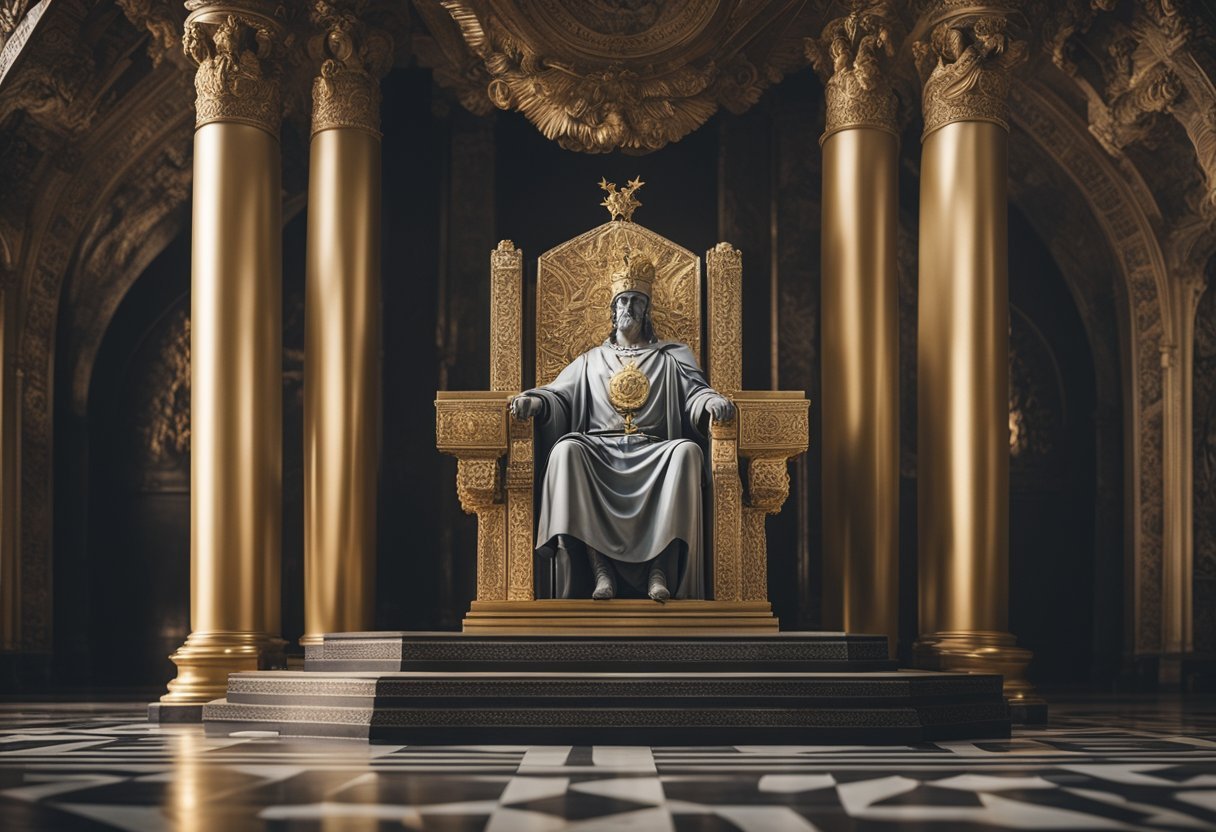Constantine the Great stands as one of the most transformative figures in Roman history. Born around 272 CE, he ascended to power in 306 CE and ruled until his death in 337 CE. Constantine was the first Roman emperor to convert to Christianity, a shift that forever changed the Roman Empire and the course of Western civilization. His reign marked the beginning of Christendom’s rise as he decriminalized Christian worship with the Edict of Milan in 313 CE and heavily supported the church.
He played a pivotal role in establishing Constantinople, a city that would later become a vital center of the Byzantine Empire. This strategic move not only fortified the eastern part of the empire but also laid the groundwork for a new era in urban development and cultural fusion.
Constantine’s policies and architectural projects, like the building of churches and promotion of theological councils, reshaped the religious landscape of the Roman world. Whether you’re a history buff or just curious about how one man’s decisions echo through centuries, his legacy offers a fascinating glimpse into an era of monumental change.

Early Life and Rise to Power
Constantine the Great was born into a prominent family and witnessed the Roman Empire’s significant transformation under the Tetrarchy system. His journey to becoming Augustus was filled with strategic alliances and rivalries.
Birth and Lineage
Constantine I was born on February 27, around 272 CE in Naissus (modern-day Niš, Serbia). His father, Constantius Chlorus, was a Roman official who rose to prominence, eventually becoming Caesar under Emperor Diocletian.
His mother, Helena, came from more modest origins but would later achieve sainthood. This mixed heritage gave Constantine a unique perspective, blending imperial ambition with a connection to the common people.
Roman Tetrarchy
The Roman Tetrarchy was established by Emperor Diocletian to address the vast responsibilities of governing the sprawling empire. This system divided power among four rulers: two Augusti and two Caesars.
Constantius Chlorus, Constantine’s father, was appointed Caesar of the West. This created both opportunities and challenges for young Constantine, who was exposed to the complexities of imperial politics early on, gaining insights that would later prove invaluable.
Road to Being Augustus
When Constantius Chlorus died in 306 CE, his troops at Eboracum (modern-day York, England) declared Constantine as Augustus. This move wasn’t universally accepted, leading to a power struggle with other claimants.
Constantine skillfully navigated these challenges by forming key alliances and securing military victories. His pivotal moment came at the Battle of Milvian Bridge in 312 CE, where he triumphed over Maxentius. This victory not only secured his position but also marked the beginning of his reign as a pivotal figure in Roman history.
Reign and Legacy

Constantine the Great’s reign marked significant transformations through his religious policies, administrative reforms, the foundation of Constantinople, and lasting impact on Christianity.
Religious Policies
Constantine is famous for his role in the Christianization of the Roman Empire. He issued the Edict of Milan in 313 AD, which granted religious tolerance to Christians and ended their persecution. This policy boosted the acceptance and spread of Christianity across the empire.
He also played a key role in organizing the First Council of Nicaea in 325 AD. This council aimed to achieve consensus in the church and addressed the Arian controversy, leading to the Nicene Creed. These actions elevated the standing of Christianity, laying groundwork for it to become the state religion.
Administrative Reforms
Constantine introduced several administrative reforms to stabilize and strengthen the empire. He restructured the empire’s military and civilian administration, creating a more efficient and centralized government. The division of the empire’s territory into smaller units or prefectures facilitated better governance.
He also reformed the tax system, which increased state revenues and reduced corruption. His solidus coinage reform introduced a new gold coin that became the standard currency, contributing to economic stability. These changes helped maintain the empire’s integrity and facilitated its management.
Constantinople Foundation
One of Constantine’s most enduring legacies is the foundation of Constantinople in 330 AD. He strategically chose Byzantium’s location for its geographic advantages, such as trade routes and natural defenses.
Constantinople quickly became a vibrant center for commerce, culture, and governance. It later served as the capital of the Byzantine Empire and remained a crucial city for over a millennium. Constantine’s vision for the city symbolized the fusion of Roman traditions with a new, Christian identity.
Impact on Christianity
Constantine’s reign profoundly influenced Christianity. By supporting and legitimizing the religion, he transformed it from a persecuted faith into a dominant force in the Roman Empire. His patronage of Christian churches and clergy further strengthened the church’s position.
He encouraged the building of important churches, such as the Church of the Holy Sepulchre in Jerusalem. Moreover, his policies promoted the spread of Christian culture and values. Constantine’s actions directly influenced the development and expansion of Christianity, ensuring its pivotal role in shaping Western civilization.

